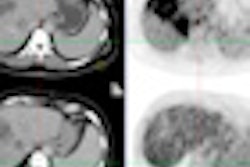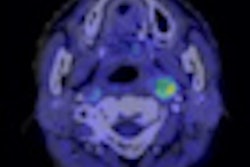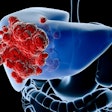Early detection of cancer and better treatment are producing positive results: A steadily increasing percentage of patients survive. However, survival gains are being offset by serious treatment-associated late adverse effects, an article in the March issue of the Journal of the National Cancer Institute reports.
The U.S. National Council on Radiation Protection and Measurements (NCRP) has taken a hard look at the clinical problems radiation therapy treatment may cause cancer patients later in life. Its findings are sobering.
The NCRP assembled a multispecialty scientific committee to review the likelihood of cancer survivors developing radiotherapy-associated cardiovascular disease and second cancers and to make recommendations for future research. The findings of the five-year investigation were summarized by a team led by Dr. Lois Travis, professor of radiation oncology and director of the Rubin Center for Cancer Survivorship at the University of Rochester (JNCI, March 2012, Vol. 104:5, pp. 357-370).
Approximately half of all cancer patients undergo some type of radiotherapy treatment. The American Cancer Society (ACS) estimated that in the U.S. in 2007, approximately 12 million cancer patients were alive five years after treatment, an increase from 9.8 million patients in 2001. With steady improvements in treatment, this number is expected to escalate annually.
But also rising is the number of cancer survivors who develop new malignancies or cardiovascular disease, often decades after initial treatment.
Risk of second malignancies
No matter what their age, Hodgkin's lymphoma survivors have elevated risks for most types of second cancers, especially lung cancer and breast cancer. Pediatric survivors have the highest overall risk, especially for breast cancer, which tends to occur as soon as six years and as many as 30 years following treatment. Pediatric survivors are also more prone to developing bone and thyroid cancers than survivors who received treatment as adults.
Survivors of non-Hodgkin's lymphoma have increased risk of developing acute leukemia, bladder cancer, kidney cancer, and mesothelioma. Pediatric patients treated for acute lymphoblastic leukemia with radiotherapy are at a higher risk of developing brain tumors, acute myeloid leukemia, and carcinomas of the skin, thyroid, and parotid glands.
Breast cancer patients historically have had a higher risk of developing lung cancer, esophageal cancer, and cancer in the contralateral breast. Because new cancers appear to be related to the amount of radiation dose, and because the risk level differs between radiotherapy treatments following a mastectomy versus a lumpectomy, it is possible that risk may be lower with newer, more targeted therapies, such as partial-breast irradiation.
Women treated for cervical cancer face significantly increased risk of developing cancers of the bladder, kidneys, rectum, and ovaries, and for solid pelvic tumors, the risk may last for more than 40 years following radiotherapy treatment.
Prostate cancer patients whose treatments included radiotherapy have a more modest risk but may develop lung cancer, bladder cancer, colorectal cancer, and soft-tissue sarcoma. Men treated for testicular cancer may have a higher risk of developing leukemia, as well as cancers of the lung, thyroid, esophagus, stomach, pancreas, colon, rectum, kidney, bladder, and connective tissue.
Children who are treated at a younger age have a greater risk of developing a brain tumor. Girls also have a much higher risk of developing breast cancer.
Cardiovascular disease
Cancer survivors also face a disproportionate risk of developing cardiovascular disease, which for some is the leading noncancer cause of death. Types of cardiovascular diseases to which radiotherapy-treated cancer survivors are most susceptible include coronary artery disease, cerebrovascular disease, valvular dysfunction, and conduction abnormalities.
Patients treated for Hodgkin's lymphoma, particularly children, who received high levels of radiation doses for their treatments are particularly susceptible to a variety of types of cardiovascular diseases. Radiation may also cause fibrosis of cardiac conduction pathways, causing defects and/or arrhythmia.
Patients of all ages treated for head and neck cancers, particularly with doses greater than 60 Gy, are at greater risk for stroke. Leukemia and brain tumor survivors are also more susceptible. Stroke may occur many decades following treatment.
Comments and recommendations
The committee noted that steadily changing radiotherapy treatments make the linking of radiation-induced malignancies and cardiovascular disease risk challenging to monitor, especially since these conditions may not materialize for decades following treatment.
The group recommended that patients should be followed for longer periods of time and their health documented. Specifically, long-term, large-scale follow-up of cancer survivors should be undertaken, especially for patients treated with newer radiotherapy devices providing stereotactic radiotherapy, intensity-modulated radiotherapy, image-guided radiosurgery, tomotherapy, and proton therapy.
The authors suggested that patients who developed second cancers be evaluated not just with respect to the type of cancer, but also their specific treatment by modality and by radiation dose. Special emphasis should be given to following pediatric cancer survivors: Improved treatments enable the majority to survive, but, as a result, the period over which they may develop second cancers is much longer.
The committee also recommended that patients themselves need regular and extensive counseling. As these patients age, particularly those who are treated as children through young adulthood, known risk levels need to be characterized, and, when possible, prevention and intervention strategies need to be initiated in a timely manner.



















